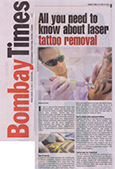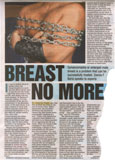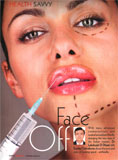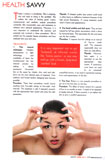
About Vasudhan :: Vasudhan Profile
Vasudhan Plastic, Laser & Cosmetic Surgery is one of the largest ISO certified Cosmetic & Laser Surgery centers in India. We have 2 centers in Mumbai at Borivali & Vile Parle.
Vasudhan was started in the year 1990 as a specialized centre to cater to Plastic & Cosmetic Surgery. In order to enhance the existing facilities & provide a multitude of treatments we started our very own Cosmetic Laser Centre. Our very first laser was acquired in the year 2000 after which there has been no looking back.
Today we are equipped with 14 top of the line different wavelength Cosmetic Laser Systems for the treatment of various clinical skin conditions right from birthmarks to scars & rejuvenation. We are a 6 bedded hospital with a fully equipped operation theatre. We are also fully equipped to perform Liposuction & Mega Liposuction procedures with SONOCA UAL & Microaire PAL.
Dr. Lakshyajit D. Dhami is the founder of Vasudhan Plastic, Laser & Cosmetic Surgery. He is ably assisted by Senior Plastic & Cosmetic Surgeon Dr. Ajay Hariani.
Surgeons from all over India regularly visit Vasudhan to observe & learn about the various Laser & Cosmetic treatments & Cosmetic Surgery procedures as fellows & observers.
Know Your Doctor :: Dr. Lakshyajit D. Dhami
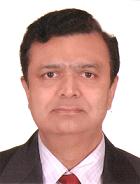
Dr L. D. Dhami is a practising Cosmetic, Plastic & Laser Surgeon in Mumbai since 1986. He is attached to B. Nanavati Hospital, Mumbai, as a Consultant Cosmetic & Plastic Surgeon since 1987. Dr. Lakshyajit Dhami is very well known in his speciality as an innovator, a teacher and as a sought after Cosmetic Surgeon.
Dr Dhami has been in the field of plastic surgery since 1981 and is qualified as M.Ch. (Plastic Surgery) from the University of Mumbai. He received his undergraduate training & degree from the University of Mumbai (Bombay) and his M.S. degree from the same university. During his residency, he was based at L. T. Medical College, Sion, Mumbai & later during year 1985-86 at St. Lawrence Hospital, Chepstow, UK. Along with training in Cosmetic (Aesthetic) Surgery, Dr. L. D. Dhami has completed a specialised course in Microsurgery as a Clinical Research Fellow at North Wick Park Hospital, London, UK.
Dr Dhami is a senior life member of APSI since 1983. Dr Dhami has been awarded & honoured with a very prestigious Professorship in Cosmetic/Aesthetic Surgery by APSI. He is also a recipient of the Rajiv Gandhi Excellence Gold Award in recognition of his contribution in the field of medicine.
In addition to his attachment at P D Hinduja Hospital & B. Nanavati Hospital, he has his private practise at VASUDHAN ARJIN Cosmetic & Laser Surgery Centre located at Borivli & VileParle, Mumbai. This centre is equipped with the latest, top of the line Twelve (12) different Cosmetic Laser Systems for the treatment of various clinical conditions, the only one of its kind in India. Along with Laser procedures, non surgical rejuvenation of face with Botox, Fillers & Mesotherapy is also undertaken by Dr. Dhami with excellent results.
Dr. Dhami also trains M.Ch. qualified plastic surgeons from all over India, & some from abroad as well, in Cosmetic & Laser Surgery at his Clinic & at Hinduja & Nanavati Hospital. He conducts live Workshops & demonstrates various Cosmetic Surgeries in different states and cities all over India. He is a respected member/fellow of many international, national and regional societies and has actively held many Executive positions.
Dr. Dhami was introduced to Laser Surgery in the year 2000, while attending Laser Workshops at international Conferences, and has a strong interest in this field ever since. He is one of pioneer Cosmetic surgeon to be qualified & experienced to use Laser for Cosmetic Surgery. He has travelled extensively nationally & internationally to teach many Plastic Surgeons and Dermatologist these techniques. Surgeons visit his VASUDHAN ARJIN Cosmetic Laser Centre regularly to observe and learn how these procedures are done. He is the Founder President of IACLS (Indian Association of Cosmetic Laser Surgeons) and has successfully conducted Cosmo Laser Con for three consecutive years as a Chairman of the organizing committee.
In addition to his Laser specialisation, Dr. Dhami has professional expertise in the fields of Breast surgery, Liposuction, Abdominoplasty, Eyelid Surgery, Facelift and Rhinoplasty. He is the first surgeon in this country to perform large volume Liposuction (MegaLiposuction) for body reshaping as well as to help reduce weight permanently. He has done the largest number of Mega-Liposuctions in India. He is one of the very few Plastic Surgeons to have performed Sex reassignment Surgery & has gained vast experience in the field.
Dr. Dhami was also the first plastic surgeon to utilize computer imaging to plan Rhinoplasty & Facial contouring Surgery. He has been invited to publish articles & present guest Lecture on the use of computers in plastic surgery.
Dr Dhami keeps visiting different centres all over the world, to keep up with the latest technique and procedures, master the art and then introduce them in India. He is also the first to introduce Thread Lift - Aptos/ Contour thread (non surgical face lift) Surgery, Vertical Scar Reduction Mammoplasty & Sub-Fascial Breast Augmentation procedure in the country. He has many scientific Papers, Articles & Publications to his credit.
Dr. L. D. Dhami has been treating not only Indian patients, but also NRI’s & Foreigners at India’s first ISO certified “Vasudhan Arjin Cosmetic & Laser Surgery Centre”.
Dr. Lakshyajit D. Dhami strongly believes that:
“The first and the most important step for a successful cosmetic surgery is to educate the patient, so they can decide what the best course and procedure is for themselves.”
Know Your Doctor :: Dr. Ajay Hariani
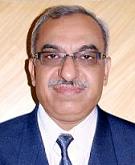
Dr. Ajay Hariani is a Senior Plastic, Cosmetic & Laser Surgeon. He is an Honorary Consultant at H. Bhagwati Municipal General Hospital (Borivali) & B C J General Hospital, Asha Parekh Hospital, Santacruz (W).
He has successfully performed a number of Cosmetic, Plastic & Reconstructive Surgeries.
He has handled various Lasers in Cosmetic Surgery like Nd YAG, Erbium YAG, Erbium Glass, Q Switch Nd YAG, Q Switch Ruby, Pulse Dye Laser, Fractional CO2 Laser, Endovenous Laser for Varicose Veins, Radio Frequency Microneedling for facial rejuvenation.
He is a member of a number of learned bodies like Association of Plastic Surgeons of India APSI, Bombay Orthopaedic Society BOS, Association of Hair Restoration Surgeon, India AHRS, Association of Cosmetic Laser Surgeon, India ACLS, Association of Medical Association AMC, Indian Medical Association IMA.
He has been actively involved in a number of workshops as under:
- Workshop on Head Neck Reconstructive Surgery, J J Hospital, Mumbai. December 1994.
- Workshop on Liposuction organized by KEM Hospital, Mumbai - July 2009.
- Workshop on Breast Aesthetic Surgery organized by KEM Hospital, Mumbai - July 2010.
- CosmoLaserCon 2009, 2010, 2011.
- Haircon 2011.

Cometic Surgery :: For Men
- Brow Lift
- Forehead Lift
- Eyelid Surgery (Blepheroplasty)
- Nose Reshaping (Rhinoplasty)
- Lip Augmentation
- Lip Reduction
- Ear Surgery (Otoplasty)
- Dimple Creation
- Cheek Implant
- Chin Augmentation
- Double Chin Liposuction
- Facelift
- Threadlift
- Necklift
- Fat Injections (Transplant)
- Cosmetic Treatments
- Botox/Fillers (Temporary & Permanent)
- Chemical Peeling
- Microdermabrasion
- Gynecomastia
- Liposuction/Body Sculpting
- Tummy Tuck (Abdominoplasty)
- Arm Liposuction
- Back Liposuction
- Flanks Liposuction
- Abdomen Etching/6 pack
- Buttock Implant
- Buttock Lift
- Buttock Liposuction
- Penile Augmentation
- Calf Implant
- Calf Liposuction
- Thigh Lift
- Thigh Plasty
- Thigh Liposuction
- Lower Body Lift
Brow Lift
Forehead Lift
Eyelid Surgery (Blepheroplasty)
Nose Reshaping (Rhinoplasty)
Lip Augmentation
Lip Reduction
Ear Surgery (Otoplasty)
Dimple Creation
Cheek Implant
Chin Augmentation
Double Chin Liposuction
Facelift
Threadlift
Necklift
Fat Injections (Transplant)
Botox/Fillers (Temporary & Permanent)
Chemical Peeling
Microdermabrasion
Gynecomastia
Liposuction/Body Sculpting
What is Liposuction/Liposelection?Liposuction/Liposelection is the surgical removal of fat cells. It slims & reshapes specific areas of the body by permanently removing localized or regional excess fat deposits, thereby improving your body contours and proportion and ultimately enhancing self image.
How is Liposuction done?
The area from where the fat is to be permanently removed is marked and infiltrated with saline based solutions through a small & inconspicuous incision. The fat is then liquefied with the help of ultrasonic, laser or power assisted fine metal cannulas. This liquefied fat is then sucked out of the body with the help of a powerful suction device. This procedure can be carried out under local, regional or general anesthesia.
How much fat can be removed? (Benefit)
Whatever extra fat is present in different parts of the body can be removed in a single sitting itself. For a person who is obese, mega liposuction can remove more than 10-15 litres and even up to 25 litres of fat in one session. When fat needs to be removed from multiple areas of the body e.g. front and back, it may require more than one session. The plastic surgeons at Vasudhan are pioneers of Mega Liposuction with numerous scientific presentations and publications to their credit. A large scientific study involving more than 1000 liposuction procedures carried out at our Centre has proved an average loss of more than 10% of the body weight after mega-liposuction
Am I a candidate for Liposuction/ Body sculpting?
Both obese as well as people in the normal weight range are candidates for liposuction. For those with average weight it works best for treating localized fat deposits that are stubborn, recurrent or do not respond to diet and exercise. For an obese person, it primarily reshapes multiple areas resulting in permanent fat and weight loss. Some of the most desired areas for fat removal are double chin, arms, chest, abdomen, back, buttocks, thighs & calves.
What is the period of hospitalization required?
Liposuction is a day care surgery. For most people a morning to evening stay in the centre is all that is required.
What postoperative care is required?
Initial healing may include some swelling, numbness, soreness or discomfort. However these are common conditions and are controlled with medication. The incisions are left open to allow excess fluid to seep out. Also it is preferable to wear pressure garments for a period of 2-3 months which prevents any irregular contour and skin laxity to an extent. Post the procedure, it is advisable to follow your plastic surgeon’s instructions and attend follow up visits as scheduled.
Post operation how is the loose skin taken care of?
The pressure garment usually takes care of the loose skin. However in older patients the loose skin can be removed if desired with the help of Skin Plasty e.g. Abdominoplasty/Tummy Tuck/Thigh & Arm plasty. This may be combined with liposuction.
When can one resume normal activities?
A person who has undergone standard Liposuction can resume normal activities within a couple of days while a person who has undergone mega liposuction can resume normal activities within 7-10 days.
When will the results of Liposuction be apparent?
In most of the patients the results of liposuction are visible on the first day, however the final results are apparent after a period of 3 weeks to 3 months and continue to improve up to a year. It is important to maintain your weight loss and practice a healthy lifestyle that includes eating right and regular physical activity.
Tummy Tuck (Abdominoplasty)
A flat and well toned abdomen is something many of us aim for through exercise or weight control. Even individuals of otherwise normal body weight & proportion can develop an abdomen that protrudes, is loose or sagging.What is Tummy Tuck?
Tummy Tuck surgically removes excess skin and fat and in some cases restores weakened or separated abdominal muscles. This creates an abdominal profile that is flatter & firmer thereby enhancing body image & self-confidence.
Am I a candidate for a Tummy Tuck?
One or all of the following conditions can be surgically improved with a Tummy Tuck:
• Excess localized fat in the abdominal area
• Loose and sagging skin in the abdominal region
• Weakened and separated abdominal muscles or abdominal hernia due to pregnancy, weight loss, aging or previous surgery
How is Tummy Tuck performed?
Liposuction is performed first to remove excess fat from the entire abdominal region and flanks. Then in the same sitting, sagging or overhanging skin and tissues are removed through skin excision.
This procedure is also known as Lipo-abdominoplasty.
What is the period of hospitalization?
A morning to evening stay at the centre is all that is usually required. However some patients might prefer an overnight stay.
What postoperative care is required?
Initial healing may include some swelling or discomfort. However these are common conditions and are easily controlled with medication. Also it is preferable to wear pressure garments for a period of 3-6 months. Bending, straining, lifting heavy objects and vigorous exercise should be avoided for several days. Post the surgery, continue to follow your plastic surgeon’s instructions carefully and attend follow up visits as scheduled.
When can one resume normal activities?
A person who has undergone Tummy Tuck can resume day to day activities within a couple of days. One can return to work in 2-3 weeks’ time.
When will the results of Tummy Tuck be apparent?
The results of a tummy tuck are visible almost immediately. It may take a couple of months for the final results to fully develop.
Arm Liposuction
Back Liposuction
Flanks Liposuction
Abdomen Etching/6 pack
Buttock Implant
Buttock Lift
Buttock Liposuction
Penile Augmentation
Calf Implant
Calf Liposuction
Thigh Lift
Thigh Plasty
Thigh Liposuction
Lower Body Lift
Cometic Surgery :: For Women
- Brow Lift
- Forehead Lift
- Eyelid Surgery (Blepheroplasty)
- Nose Reshaping (Rhinoplasty)
- Lip Augmentation
- Lip Reduction
- Ear Surgery (Otoplasty)
- Dimple Creation
- Cheek Implant
- Chin Augmentation
- Double Chin Liposuction
- Facelift
- Threadlift
- Necklift
- Fat Injections (Transplant)
- Cosmetic Treatments
- Botox/Fillers (Temporary & Permanent)
- Chemical Peeling
- Microdermabrasion
- Breast Augmentation
- Breast Lift
- Breast Reduction
- Liposuction/Body Sculpting
- Tummy Tuck (Abdominoplasty)
- Arm Liposuction
- Hand Rejuvenation
- Back Liposuction
- Flanks Liposuction
- Blouse Fold
- Axilla Fold
- Abdomen Etching
- Buttock Implant
- Buttock Lift
- Buttock Liposuction
- Calf Implant
- Calf Liposuction
- Vaginoplasty
- Hymenoplasty
- Thigh Liposuction
- Thigh Plasty
- Thigh Lift
- Lower Body Lift
Brow Lift
Forehead Lift
Eyelid Surgery (Blepheroplasty)
Eyelid surgery improves the appearance of the upper eyelids, lower eyelids, or both, and gives a rejuvenated appearance to the surrounding area of the eyes, making one look more rested and alert.Specifically, eyelid surgery can treat:
Loose or sagging skin that creates folds or disturbs the natural contour of the upper eyelid, sometimes impairing vision
Excess fat that appear as puffiness in the upper eyelids
Fat prolapse leading to baggy eyelids
Droopiness of the lower eyelids, showing white below the iris (colored portion of the eye)
Excess skin and fine wrinkles of the lower eyelid
Procedure:
It is usually done under local anesthesia with or without sedation. An incision is made in the upper eyelid fold through which excess fat & skin is removed. Since the suture lies in the fold it is not visible. In the lower eyelid the incision is made very close to the margin (eyelashes) of the lower eyelid. Through this the under eye bags are either removed or relocated. The lower eyelid muscle is tightened and excess skin removed as necessary. This procedure may be combined with a facelift or threadlift procedure.
What is the period of special care required in the hospital?
A morning to evening stay in the centre is all that is required.
What precautions are to be taken post surgery?
After the procedure is completed, lubricating ointment and cold compresses may be applied, and in some cases the eyes may be loosely covered with gauze after the first few hours after surgery which are removed before discharge.
When can I resume my normal activities?
Day to day activities may be resumed in 2-3 days. The sutures are removed in 4-5 days time. One may be advised to use sunglases for a week to 10 days time.
When will the results be apparent?
The final results of eyelid surgery will be apparent once the swelling subsides in few weeks time.
Nose Reshaping (Rhinoplasty)
What is Rhinoplasty?The goal of Rhinoplasty is to shape the nose such that it looks natural and blends harmoniously with the rest of your facial structure. It improves the appearance and proportion of the nose. It can change the size of the nose, the angle between the nose and upper lip, the shape of the tip or the bridge, the width of the nostrils. Septo-rhinoplasty can also correct impaired breathing.
Am I a candidate for Rhinoplasty?
Some of the indications that you may be a good candidate for Rhinoplasty are:
• Your nose is small or is depressed (saddle nose)
• Your nose appears too large for your face
• There is a hump on the nasal bridge
• Your nose seems too wide
• The nasal tip droops or plunges
• The tip is thickened or enlarged
• Your nostrils are excessively flared
• Your nose is off-centre or crooked / depressed
• Your nose gets blocked often resulting in breathing impairment
• Previous injury has made your nose asymmetrical
What is the period of special care required in the hospital?
A morning to evening stay at the centre is all that is usually required. However some patients might prefer an overnight stay.
What precautions are to be taken post surgery?
A splint may be placed on the nose for 6 to 7 days to hold the tissues in place till they stabilize. The splint will protect your nose from accidental bumps and while you sleep. It is imperative to keep the head elevated while sleeping and restrict vigorous movements for a week.
When can I resume my normal activities?
You will be able to return to work within a eight to ten days. Most normal activities including exercise may be resumed after three weeks or when your surgeon advises you to do so.
When will the results of Rhinoplasty be apparent?
The results¬ of the Rhinoplasty will appear gradually as the swelling and edema decreases over time. Three months to a year are considered normal for the outcome of rhinoplasty to fully refine.
Lip Augmentation
Lip Reduction
Ear Surgery (Otoplasty)
Dimple Creation
Cheek Implant
Chin Augmentation
Double Chin Liposuction
Face lift
Facial aging includes a loss of skin elasticity and firmness, sagging tissue and wrinkles. Sagging in the midface can create a deep crease below the lower eyelid and between the nose and the mouth that may make you appear tired and sad. Fat that has fallen or is displaced and loss of muscle tone in the lower face may create jowls. Loose skin and excess fatty deposits under the chin and jaw can make even a person of normal weight appear to have a double chin. Even droopy eyebrows and neck folds are common signs of aging.Facelift
A facelift is designed to correct all aging features, thereby restoring a more youthful, rested appearance with uplifted contours and improved tone in facial skin and underlying muscle. It is a surgical procedure which does not change the basic facial appearance but restores it to a younger version of itself which continues to gae naturally over time.
How is it performed?
Depending on the part of the face requiring facelift, small incisions are created. Fat may be sculpted or redistributed and underlying tissue repositioned. Skin is redraped over the uplifted contours and excess skin is trimmed away. Once healed the incision lines are well concealed within the natural contours of the face. A facelift requires general anesthesia.
What is the period of special care required in the hospital?
A morning to evening stay in the centre is all that is required. However some patients might prefer an overnight stay.
What precautions are to be taken post surgery?
Initial healing may include swelling, numbness or discomfort which can be controlled with medication. Facial movements may be temporarily restricted. Your head needs to be kept elevated at all times until the initial swelling subsides. Also specific instructions as to face and hair cleansing have to be followed.
When can I resume my normal activities?
The face lift healing time and recovery period can last anywhere from one week to several weeks, depending on the type of face lift surgery undergone. Most patients can return to work from a standard face lift in 10 days to two weeks, and patients who choose a mid face lift can expect about the same amount of recovery time. Patients who undergo an endoscopic face lift can return to work in as little as a day or two, and thread face lift and mini face lift patients can expect about the same “weekend” recovery time.
Thread lift
What is a thread lift?A thread facelift is a convenient, less invasive alternative to traditional facelifts, designed for people experiencing early signs of aging, such as minor facial sagging. Designed to be less invasive, it can reduce sagging around the eyes, cheeks, jawline, area between the nose and corners of the mouth and neck more quickly and with less risk than the conventional approach. Special threads are used during this facelift to discreetly hold repositioned skin and facial tissue in place after surgery.
Procedure:
A Thread lift can be performed in just one or two hours, often under local anasthesia. During a thread facelift, the cosmetic surgeon inserts thin threads into the face through tiny incisions made in the targeted area. These threads attach to the skin tissue and are then pulled back to lift and smooth the face. Almost immediately, treated areas will be raised slightly, eliminating sagging and giving patients a rejuvenated appearance. Because patients usually remain fully conscious during the procedure, they can approve the look of their thread lift while the surgeon works. Once the threads are knotted, they become hidden within the skin itself, and any scarring that results will be virtually invisible.
Who are the best candidates for a thread lift?
The best candidates for a thread lift are in their 30s to 60s and have relatively good skin tone. Most are beginning to experience sagging in their face or neck but do not have excessively loose skin or drooping facial areas that might require more rigorous facelift surgery. If signs of aging are relatively minimal, a thread lift may be a good way to make cosmetic enhancements while avoiding facelift scarring and other potential side effects, which sometimes occur after more intensive surgical procedures.
What is the post-operative care involved?
Initial healing may include swelling, numbness or discomfort which can be controlled with medication. Postoperative instructions will include limits on physical activity, pain management, and some diet restrictions for the first week. The head should be elevated for the first day to minimize swelling and discomfort. Surgeons may recommend no facial makeup for two to three weeks after a thread lift.
When can I resume my normal activities?
One can resume normal activities the following day itself. In just a couple of days, one can enjoy full recovery from a thread lift procedure.
When will the results be apparent?
The thread life procedure shows noticeable results almost immediately. If you dislike the result of your thread lift, simply removing the thread easily reverses it. Results can also be adjusted by having your plastic surgeon adjust the tension of the thread. The results can last for 1-2 years.
Neck lift
The aging process, rapid weight loss, and excessive sun exposure can all cause the skin on a person’s neck to lose its natural vitality. A neck lift is a minor surgical procedure that improves the appearance of a patient’s neck by removing excess skin and tightening the muscles underneath. A neck lift can get rid of loose “bands” of skin and fat that accumulate with age, as well as accentuate the patient’s jaw and reduce the “jowly” appearance that also sometimes occurs.Am I a candidate for a neck lift?
The ideal neck lift candidate is someone whose skin still has some elasticity and who has realistic expectations for the surgery. The patient must also be in good physical health and be able to miss at least a week of normal activity. The most important step to take when considering any kind of cosmetic surgery, however, is to talk to an experienced doctor. Knowing the potential risks, benefits, and limitations of the procedure will help ensure satisfactory results.
Procedure:
The neck lift procedure is done under local or general anasthesia, depending on the preferences of the doctor and patient. The doctor then usually makes small incisions behind the ears and underneath the patient’s chin, through which most of the surgery will be done. This procedure consists of several techniques. The procedure may target to removal or reshaping of the extra neck muscle. If extra skin the skin is lift and organized in a desired position. If an extra fat is present, liposuction is also performed. A small cut is made below the chin through which a special cannula is inserted. Through the cannula the extra fat is removed.
What is the post-operative care involved?
Initial healing may include swelling, numbness or discomfort which can be controlled with medication. It is advisable to avoid strenuous activities for 1-2 weeks after the procedure.
When can I resume my normal activities?
Most people can return to work after 10-14 days.
When will the results be apparent?
The cosmetic results of the procedure can be seen within a few days of the neck lift,. Final results usually take from three to six months to fully appear. The tighter neck and more defined jaw will typically last from five to ten years, after which the patient will return to his or her pre-surgery state.
Fat Injections (Transplant)
Fat transplantation is a procedure to harvest fat from one part one part of the body and transplant it to another part that requires reshaping, rejuvenating or for flaw correction. Usually the fat is harvested from the thighs, abdomen and buttocks for the procedure.Body Areas Benefited Most by Fat Transplantation include:
Lips and cheeks are the most popular sites for fat transplantation. As we age, the face loses its fullness. The fat under the skin, shrinks, resulting in a more hollow looking face and wrinkles around the mouth.
Breasts for women whose breasts have naturally small breasts or for those whose breasts have shrunk post pregnancy or due to weight loss.
Pectoral muscles in men, often competitive body builders, are implanted with fat to increase the size of the pectoral muscles or calf muscles.
Buttocks retain transplanted fat very well
Penis enlargements often use fat transplants during penis enlargement and lengthening procedures.
Procedure:
Fat transplantation is done under local or general anesthesia and the amount of time required for the procedure depends on the amount of fat transplantation that needs to be done. The fat is removed from an area of excessive fat through a liposuction procedure. This fat is then injected into the recipient area with very small, specially designed blunt cannula.
What is the period of special care required in the hospital?
A morning to evening stay in the centre is all that is required. However some patients might prefer an overnight stay.
What precautions are to be taken post surgery?
Fat implantation is usually done in conjunction with other procedures such as liposuction and the recovery is similar to that for liposuction. Initial healing may include some swelling, numbness, soreness or discomfort. However these are common conditions and are controlled with medication. Also it is preferable to wear pressure garments for a period of 1-6 months. fat injections.
For breasts that received a fat transplantation, a special bra is worn for two to three weeks to allow the fat to stay in place. Another rigid cover is used for penis transplants. The swelling lasts about three weeks.
When can I resume my normal activities?
The patient is advised to start walking around a few hours after the surgery. Strenuous activity and exercise should be avoided for a few weeks or as advised by the surgeon.
Botox/Fillers (Temporary & Permanent)
Chemical Peeling
Microdermabrasion
Breast Augmentation
Breast AugmentationBreast Augmentation enlarges a woman’s breasts through surgical placements of silicone breast implants. It is done to increase fullness & projection of the breasts thereby improving the balance in a woman’s figure and enhancing self-image & self-confidence. Another procedure in vogue to increase the breast size is for women undergoing liposuction (unwanted fat removal) from any other part of the body. Here the excess fat removed is injected in the breasts thereby increasing their size naturally. This excess fat can also be enriched with stem cells so as to provide better and definitive size enlargement.
Am I a candidate for Breast Augmentation?
This procedure is used cosmetically to:
• Increase breast size of naturally small breasts
• Increase breast volume & firmness lost during pregnancy or as a result of weight loss
• Achieve a balance when both breasts are of different sizes or shape
• As a constructive technique to restore a breast lost due to injury or other reasons
Implants:
The breast implant is made of a silicone shell filled either with silicone gel or saline or both. Implant placement, type, & size will be determined based on your breast anatomy, body type, desired increase in size & your plastic surgeon’s judgment.
Procedure:
An incision 1.5-2inches long is made either underneath the breast just above the crease or around the dark area around the nipple or within the armpit. Then an adequate pocket is created to place the implant. The latest trend is to place the implant between the chest muscle and the sheath above this muscle. This gives the most appropriate and ideal results.
What is the period of special care required in the hospital?
A morning to evening stay in the centre is all that is required.
What precautions are to be taken post surgery?
Initial swelling or discomfort is taken care of with medication. A support bra may be recommended for 2-3 weeks.
When can I resume my normal activities?
You will be able to return to work within 5-10 days. Most normal activities including exercise may be resumed after three weeks or when your plastic surgeon advises you to do so. Vigorous movements, especially arm movements or heavy weight lifting may be restricted for 1-2 months.
When will the results of Augmentation be apparent?
The results of Breast Augmentation are visible immediately. Final results appear gradually over the next few weeks.
Are there any complications following silicone breast implants?
There is no evidence that breast implants will cause cancer, affect fertility, pregnancy or your ability to breast feed.
Breast Lift
Breast Lift:Breast lift raises and firms the breasts by removing excess skin and tightening the surrounding tissue to reshape and support the new breast contour.
Breast Reduction
Breast Reduction:Breast reduction is a surgical procedure to reduce the size of large breasts that are disproportionate to a woman’s body and can cause physical pain, discomfort or impair her ability to lead an active life. Emotional discomfort or self-consciousness is often associated with large pendulous breasts.
Candidate:
It improves breast size, shape and the associated conditions of large breasts that include:
• Back, neck & shoulder pain caused by heavy weight of breasts
• Shoulder discomfort from bra straps supporting heavy breasts
• Restricted activity
• Sagging, Stretched skin & low breast profile
• Self-consciousness and emotional discomfort
Procedure:
It is most commonly performed through keyhole incisions with surgical removal of the excess fat, tissue & skin that contribute to large breasts. If breast size is largely due to fatty tissue and not excess skin, then liposuction procedure alone may be used for breast reduction.
What is the period of special care required in the hospital?
An overnight stay at the centre is preferred. However some patients may go home the same evening.
What precautions are to be taken post surgery?
Initial swelling or discomfort is taken care of with medication. A support bra or elastic bandage dressing is to be worn for 1-2 weeks to minimize swelling/discomfort and support the breasts as they heal.
When can I resume my normal activities?
You will be able to return to work within a week to ten days time. Most normal activities including exercise may be resumed after three weeks or when your surgeon advises you to do so. Vigorous movements, especially arm movements or heavy weight lifting may be restricted for two to three weeks.
When will the results be apparent?
The results of Breast Reduction are visible immediately. Final results appear gradually over the next few months as swelling, edema subside and breast shape evolves.
Liposuction/Body Sculpting
What is Liposuction/Liposelection?Liposuction/Liposelection is the surgical removal of fat cells. It slims & reshapes specific areas of the body by permanently removing localized or regional excess fat deposits, thereby improving your body contours and proportion and ultimately enhancing self image.
How is Liposuction done?
The area from where the fat is to be permanently removed is marked and infiltrated with saline based solutions through a small & inconspicuous incision. The fat is then liquefied with the help of ultrasonic, laser or power assisted fine metal cannulas. This liquefied fat is then sucked out of the body with the help of a powerful suction device. This procedure can be carried out under local, regional or general anesthesia.
How much fat can be removed? (Benefit)
Whatever extra fat is present in different parts of the body can be removed in a single sitting itself. For a person who is obese, mega liposuction can remove more than 10-15 litres and even up to 25 litres of fat in one session. When fat needs to be removed from multiple areas of the body e.g. front and back, it may require more than one session. The plastic surgeons at Vasudhan are pioneers of Mega Liposuction with numerous scientific presentations and publications to their credit. A large scientific study involving more than 1000 liposuction procedures carried out at our Centre has proved an average loss of more than 10% of the body weight after mega-liposuction
Am I a candidate for Liposuction/ Body sculpting?
Both obese as well as people in the normal weight range are candidates for liposuction. For those with average weight it works best for treating localized fat deposits that are stubborn, recurrent or do not respond to diet and exercise. For an obese person, it primarily reshapes multiple areas resulting in permanent fat and weight loss. Some of the most desired areas for fat removal are double chin, arms, chest, abdomen, back, buttocks, thighs & calves.
What is the period of hospitalization required?
Liposuction is a day care surgery. For most people a morning to evening stay in the centre is all that is required.
What postoperative care is required?
Initial healing may include some swelling, numbness, soreness or discomfort. However these are common conditions and are controlled with medication. The incisions are left open to allow excess fluid to seep out. Also it is preferable to wear pressure garments for a period of 2-3 months which prevents any irregular contour and skin laxity to an extent. Post the procedure, it is advisable to follow your plastic surgeon’s instructions and attend follow up visits as scheduled.
Post operation how is the loose skin taken care of?
The pressure garment usually takes care of the loose skin. However in older patients the loose skin can be removed if desired with the help of Skin Plasty e.g. Abdominoplasty/Tummy Tuck/Thigh & Arm plasty. This may be combined with liposuction.
When can one resume normal activities?
A person who has undergone standard Liposuction can resume normal activities within a couple of days while a person who has undergone mega liposuction can resume normal activities within 7-10 days.
When will the results of Liposuction be apparent?
In most of the patients the results of liposuction are visible on the first day, however the final results are apparent after a period of 3 weeks to 3 months and continue to improve up to a year. It is important to maintain your weight loss and practice a healthy lifestyle that includes eating right and regular physical activity.
Tummy Tuck (Abdominoplasty)
A flat and well toned abdomen is something many of us aim for through exercise or weight control. Even individuals of otherwise normal body weight & proportion can develop an abdomen that protrudes, is loose or sagging.What is Tummy Tuck?
Tummy Tuck surgically removes excess skin and fat and in some cases restores weakened or separated abdominal muscles. This creates an abdominal profile that is flatter & firmer thereby enhancing body image & self-confidence.
Am I a candidate for a Tummy Tuck?
One or all of the following conditions can be surgically improved with a Tummy Tuck:
-:- Excess localized fat in the abdominal area
-:- Loose and sagging skin in the abdominal region
-:- Weakened and separated abdominal muscles or abdominal hernia due to pregnancy, weight loss, aging or previous surgery
How is Tummy Tuck performed?
Liposuction is performed first to remove excess fat from the entire abdominal region and flanks. Then in the same sitting, sagging or overhanging skin and tissues are removed through skin excision.
This procedure is also known as Lipo-abdominoplasty.
What is the period of hospitalization?
A morning to evening stay at the centre is all that is usually required. However some patients might prefer an overnight stay.
What postoperative care is required?
Initial healing may include some swelling or discomfort. However these are common conditions and are easily controlled with medication. Also it is preferable to wear pressure garments for a period of 3-6 months.
Bending, straining, lifting heavy objects and vigorous exercise should be avoided for several days. Post the surgery, continue to follow your plastic surgeon’s instructions carefully and attend follow up visits as scheduled.
When can one resume normal activities?
A person who has undergone Tummy Tuck can resume day to day activities within a couple of days. One can return to work in 2-3 weeks’ time.
When will the results of Tummy Tuck be apparent?
The results of a tummy tuck are visible almost immediately. It may take a couple of months for the final results to fully develop.
Arm Liposuction
Hand Rejuvenation
Back Liposuction
Flanks Liposuction
Blouse Fold
Axilla Fold
Abdomen Etching
Abdominal etching takes you a step beyond conventional liposuction fat removal. This procedure is intended to give you a flatter, tighter stomach area, with stronger muscle definition.Abdominal etching also differs from abdominoplasty. In an abdominoplasty, the abdomen muscles can be tightened or removed, whereas abdominal etching only removes excess fat and skin.
Am I a candidate for Abdominal Etching?
The best candidate for this plastic surgery has naturally athletic-looking underlying muscles that can be accentuated with abdominal etching. People who are liposuction candidates, with very localized, exercise-resistant fat deposits, can obtain additional improvements through abdominal etching. Likewise, patients who undergo an abdominoplasty to reduce loosened and excessive muscles may achieve a more athletic-looking appearance with abdominal etching. The strength of the results depends on personal anatomy. The ideal candidate also follows a proper diet and exercise program, which are necessary to maintain the benefits.
Procedure:
The procedure selectively removes a small amount of fat around the patient's natural muscular contours and shapes or sculpts the abdomen to create a more athletic contour. Prior to the procedure, the surgeon makes detailed markings of the patient's flexed abdominal muscles and uses the markings to remove fat and highlight the patient's individual muscular structure. This procedure is performed under general anesthesia. Several small incisions (1-2 millimeters in length) are made in the belly button or in natural creases of the abdomen so that the incisions are not highly visible. The surgeon uses a cannula to remove excess fat and skin. It is a delicate procedure that includes sculpting grooves in the fat layers to emphasize a muscular appearance.
What is the post-operative care involved?
The patient has to wear a pressure garment to wear at all times other than bathing for three to six weeks, or as directed by the doctor. Pain, swelling, and bruising may occur, all of which can be managed with medications and proper care.
Restrictions include no exercise or lifting of heavy weights. There cannot be any pressure placed on the abdominal area.
When can I resume my normal activities?
Normal activities typically can be resumed in one to three weeks.
When will the results be apparent?
The full results of abdominal etching appear within six months of the procedure. But patients often see results such as better-fitting clothes and a firmer abdominal appearance much sooner.
Buttock Implant
Buttock Lift
Buttock Liposuction
Calf Implant
Calf Liposuction
Vaginoplasty
Hymenoplasty
Thigh Liposuction
Thigh Plasty
Thigh Lift
Lower Body Lift
Laser Treatment
- Unwanted Hair
(Permanent Removal) - Birthmark
- Port Wine Stain
- Freckles
- Keloids
- Varicose Veins
- Reticular Veins/Thread Veins
- Tattoos/Moles
- Nevus of Ota
- Hyperpigmentation
- Age & Sun Spots/Melasma
- Skin Wrinkles
- Laser Facial
- Photorejuvenation
- Hypertrophic Scars
- Stretch Marks
- Hemangioma
- Freckles/Keloids
- Acne Scars/Injury Scars
Unwanted Hair(Permanent Removal)
Birthmark
Port Wine Stain
Freckles
Keloids
Varicose Veins
Reticular Veins/Thread Veins
Tattoos/Moles
Nevus of Ota
Hyperpigmentation
Age & Sun Spots/Melasma
Skin Wrinkles
Laser Facial
Photorejuvenation
Hypertrophic Scars
Stretch Marks
Hemangioma
Freckles/Keloids
Acne Scars/Injury Scars
Plastic Surgery
- Congenital Defects & Deformities
- Hypospadias
- Vitiligo
- Sex Change
- Cleft Lip & Palate
- Burns & Contractures
- Maxillo Facial Trauma
- Hand Injuries
Congenital Defects & Deformities
Hypospadias
Vitiligo
Sex Change
Cleft Lip & Palate
Burns & Contractures
Maxillo Facial Trauma
Hand Injuries



Contact Us :: Contact Details
VASUDHAN PLASTIC, LASER & COSMETIC SURGERY
Email ID : info@lasersurgeryindia.comWebsite : www.cosmeticsurgeryindia.com
Borivali Centre:Lancelot, C Wing, 2nd Floor, S. V. Road,Opp. Shastri Nagar, Borivali (W), Mumbai 400092 Phone : (022) 2866 2525 / 2626 / 2727 |
Vile Parle Centre:Arpan, 1st Floor, V. P. Road, Near Nanavati College,Vile Parle (W), Mumbai 400056 Phone : (022) 2619 3838 / 3939 : (022) 3200 1100 / 1234 |
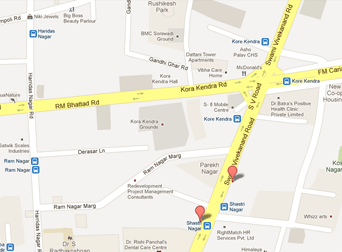
|
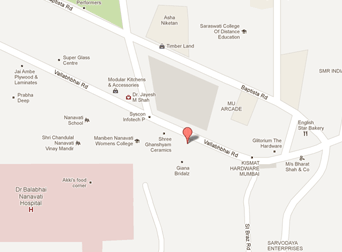
|




